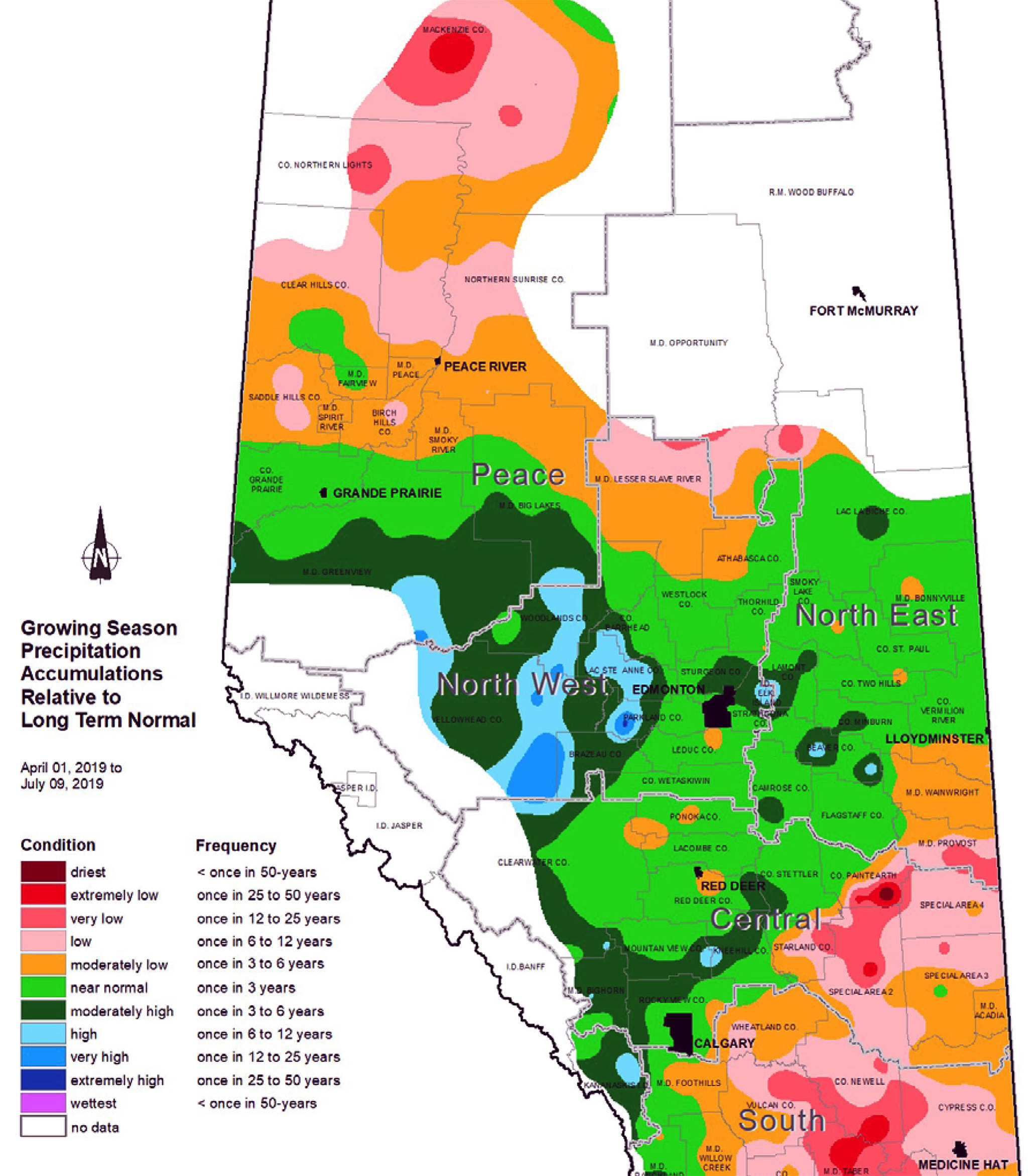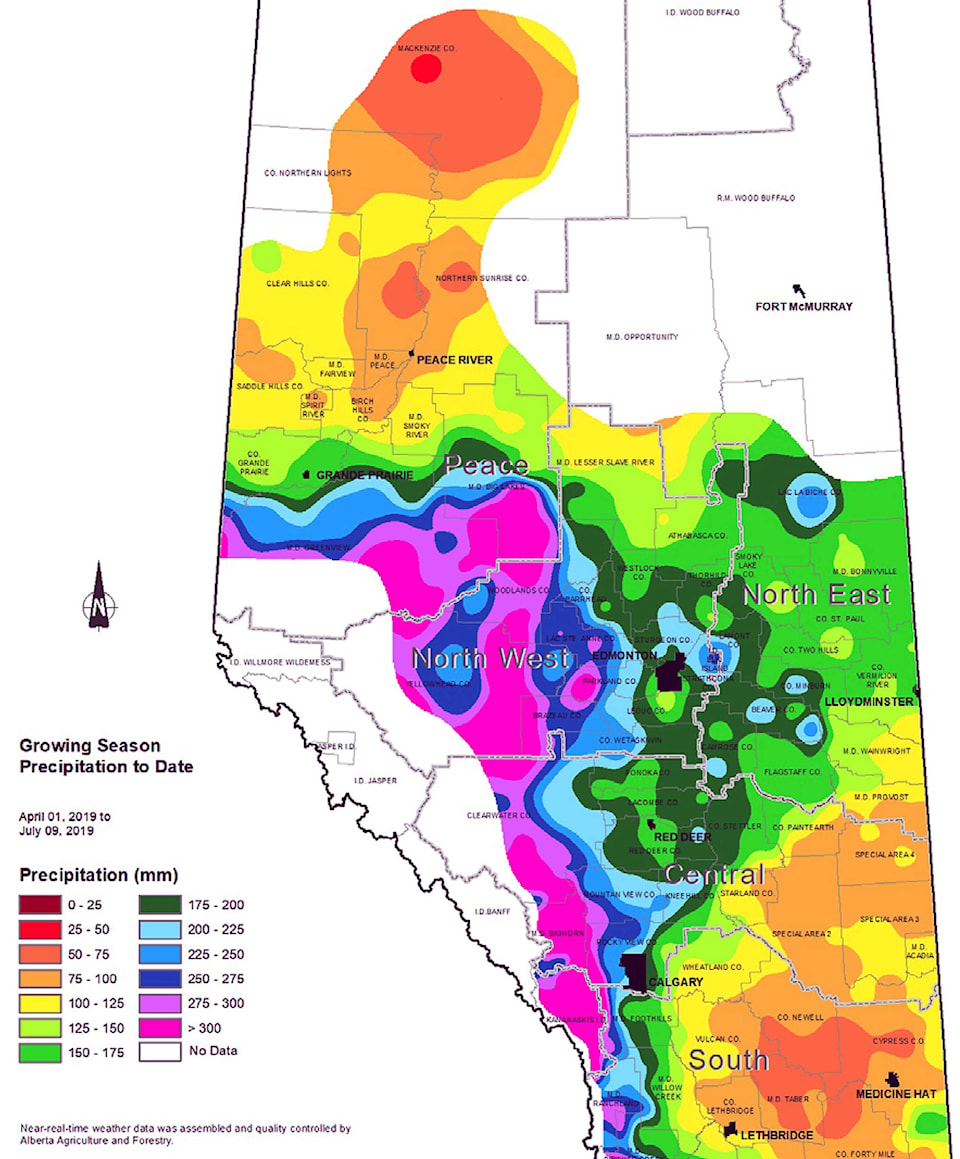There has been a lot of moisture received in the central portion of Alberta this year, but it may not affect crops come this fall.
Harry Brook, crop information specialist with Alberta Agriculture and Forestry (AFF), explained that a significant amount of precipitation has fallen in an area encompassing Grande Prairie, Slave Lake, Athabasca, Vegreville, Stettler, Calgary and along the foothills. The hardest hit regions run south from the Peace region to the U.S. border and extend east to Highway 2.
“The biggest concern isn’t the crops, that may come later on and it still might only affect harvest figures by about five to 10 per cent and that can be made up for if the heat returns,” Brook said.
“What the huge concern now is for hay. With so much rain, the hay has grown a lot and quickly. However, there hasn’t been much cut as the ground has never dried enough to get at it.
“If this unsettled weather keeps up and the hay gets too mature, it will make for poor quality.”
In addition, the humid conditions haven’t been good for hay that’s been swathed, since it doesn’t have time to properly dry.
Another concern though, especially for dairy producers across the region, is that corn crop growth is far behind normal.
“The corn crops out there now are in terrible shape,” Brook stated.
“I’ve looked at the heat unit values at various weather stations across the province and its not good. Corn performs best in temperatures at 25 degrees and above. If this weather pattern continues, there will be some really poor yields around the province.”
Disease trouble
With the large amount of moisture this year, Brook noted that producers are going to have to be on the watch for disease issues such as fusarium head blight for example.
“With this amount moisture and tight crop rotations, producers should expect the potential for disease formation,” he explained.
He also anticipates many farmers to simply go ahead and spray fungicide, but Brook issued some words of caution on this.
“Go out and check first for symptoms of disease in your crops, rather running the risk of wasting money on spraying that isn’t necessary,” he advised.
“If we use it just because and there begins to be development of resistance, then we wind up losing another tool to fight disease.”

